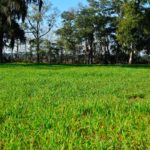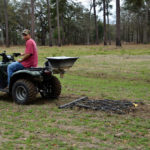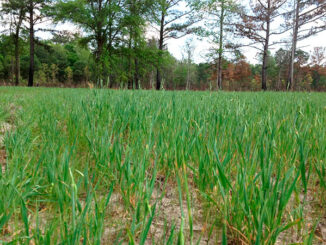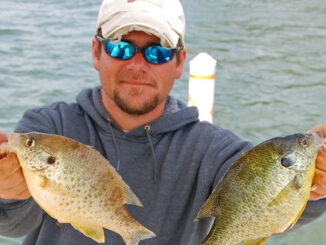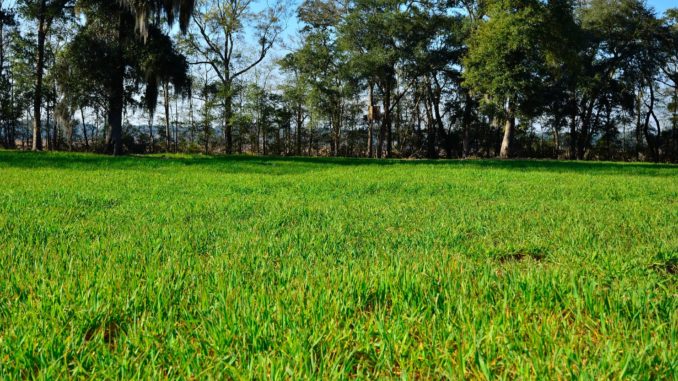
Deer and other wildlife demand rich nutrient sources throughout the year to fuel their daily requirements. For most of the Carolinas, Mother Nature provides adequate groceries in areas where wildlife populations are balanced.
There are some exceptions, particularly when unexpected winter weather blankets the landscape in December. Deer become slaves to their hunger and find food wherever it is available.
Deer in the Carolinas feast on seasonally available foods. Beginning in the spring, everything greens up, providing tender sprouts from grasses, forbs and small, woody vegetation. Additionally, the availability of spring soft mast will give deer and other wildlife plenty of reasons to get out of the bed early. Blueberries, blackberries and other soft mast become available in the spring.
Basically, deer have free reign on as much food as they need. They live the good life in the spring without any extreme cold or heat to contend with.
As summer arrives in June, the majority of the spring, soft-mast producers have played out, but plenty of green, tender options are available to satisfy a hearty appetite. Everything is green, and deer find an endless supply of nature’s bounty. They can thrive on fewer calories during the summer. They will bed down during the heat of the day and seek out food near water sources.
As the fall arrives in September, the taste of cool weather and the onset of breeding kick-starts hunger pangs, but it couldn’t be at a better time because of the fall mast crop. Soft mast isn’t just for the spring either. The countryside produces a wide variety of naturally occurring soft mast, including muscadine grapes, persimmons and plums. And fall is prime time for the oaks to release their bounty of carbohydrate-rich acorns.
Nature will provide foods for deer and other wildlife from spring through the fall. However, the Carolinas are still one of the largest agriculture producers in the nation, with millions of acres of corn, soybean, wheat, sweet potato and peanut crops that deer will travel miles to eat. Deer not only eat the seeds and root mast; they also feast on the foliage of most of every commercial agriculture crop grown.
Winter changes
With a few exceptions, most crops are planted in the spring and harvested in the fall. The one thing that natural foods and planted agriculture have in common is the period of availability. The cafeteria is open from spring until late fall, but everything begins to dry up when winter arrives, right when deer and other wildlife may need it the most.
Of course, North Carolina and South Carolina don’t exactly have the winter climates of Alaska or North Dakota, where average winter temperature lows are well below zero. In the Carolinas, when temperatures drop below freezing for an extended period or when wintry precipitation covers the ground, wildlife seeks out high-energy foods.
The winter in the Carolinas usually doesn’t arrive until after deer season is out. However, it wouldn’t be unusual to get a cold spell laced with frozen precipitation this month. Unfortunately for deer, acorns are gone, and most agriculture fields are between rotations. That leaves deer to make a living on sparse hard mast and unsatisfying woody browse with little nutritional content.
Hunters who have invested time in a season-long food plot are in luck. Deer will flock to food plots during times of wintry weather, even if hunting pressure has run them off before. Fields of cereal grains such as oats, rye, wheat and triticale are great December food-plot crops because they can still regenerate after heavy browsing. And a crop of brassicas will finally get some attention.
Often, plantings of rape, turnips and radishes will grow to epic proportions through the fall but get little use by wildlife until a hard freeze comes. The cold stimulates a chemical process that makes their foliage more palatable. But brassicas will not regenerate after heavy browsing, and deer can eradicate a plot quickly when December is freezing.
Food plots can bring wildlife in throughout the year. But when winter arrives, they can be the main event, just what the doctor ordered for that elusive buck.
Plant in December?
For most food-plotters, fall plots are planted between August and October when soil temperatures are high and conducive for germination. This period brings the best potential for a rich, fall food source, but weather conditions in early December may offer hunters a last-minute option to keep food available for their deer.
In winter, deer seek rich, hearty foods. Typically, natural foods and agricultural crops are less available than any other time. A rich food source can be a premium place to hunt the last month of the Carolina deer season.
While most food-plot varieties require warm soils to germinate, many cereal grains thrive in colder climates. Wheat and rye are cold-hearty and do well when the mercury plummets. Wheat will germinate when soil temperatures are down to 39 degrees, and it contains 20-percent crude protein.
Rye will germinate when soil temperatures are as low as 34 degrees, and it will grow well at 38 degrees. Of all the winter grains, rye is the most cold-hearty and contains 15-percent crude protein.
So planting this month is a definite yes. Early December is a perfect time to plow up and plant a crop of winter wheat or rye. Additionally, rye and wheat will continue to grow throughout the winter, providing a healthy alternative to woody browse and their limited natural food selections.
Nitrogen is key to food-plot success
Nitrogen is one of the nature’s most-important elements. It is a major component of chlorophyll, and chlorophyll is the principal compound that converts sunlight to usable energy.
With the exception of nitrogen-fixating legumes, all food plots need supplemental applications of nitrogen at several intervals, from planting to mid-way throughout the growth process.
Nitrogen can be applied in a gas, liquid or solid state. However, most applications are in liquid or solid states. Ammonium nitrate, calcium nitrate or urea are applied in liquid or granular forms. The nitrate or ammonium ions in these fertilizers are absorbed through the root systems and immediately utilized by the plant for producing energy and proteins. Nitrogen ions are a major component of amino acids, the building blocks of proteins.
Nitrogen is an important additive in most food-plot plants. However, it is relatively volatile and will only remain available for a short duration. Nitrogen unused by plants will soon leach out or get converted into the atmosphere shortly after application.
Typically, nitrogen is added along with other plant-nutrient concoctions, except for late applications on already growing crops. Nitrogen can be added mid-season to food plots to fuel rapid growth and to offset heavy browsing pressure in high deer- density areas.

